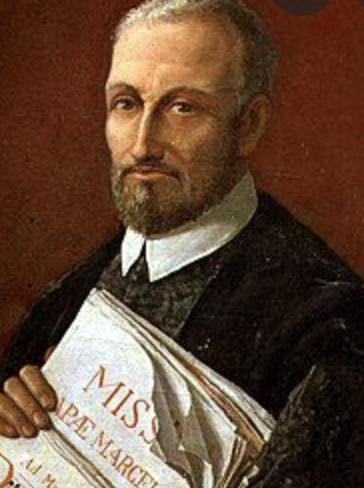|
Choral and Vocal
CANTIAMO SONOMA'S LUSCIOUS A CAPELLA SINGING IN SEASON ENDING CONCERT
by Pamela Hicks Gailey
Sunday, June 8, 2025
Symphony
SRS SEASON ENDS WITH RESOUNDING TA-TA-TA-BANG
by Terry McNeill
Sunday, June 1, 2025
Symphony
YOUTHFUL VIRTUOSITY ON DISPLAY AT USO'S MAY CONCERTS
by Peter Lert
Saturday, May 17, 2025
Symphony
MYSTICAL PLANETS AND LIVELY GERSHWIN ORTIZ AT FINAL SRS CONCERT
by Peter Lert
Sunday, May 4, 2025
Symphony
VSO'S CONCERT MUSIC OF TIME, MUSIC OF PLACE
by Peter Lert
Sunday, April 27, 2025
VOCAL ELEGANCE AND FIRE AT THE 222'S RECITAL APRIL 26
by Pamela Hicks Gailey
Saturday, April 26, 2025
CANTIAMO SONOMA SINGS AN INSPIRED GOOD FRIDAY MOZART REQUIEM CONCERT
by Pamela Hicks Gailey
Friday, April 18, 2025
DRAMATIC SHOSTAKOVICH SYMPHONY CLOSES PHILHARMONIC'S 25TH SEASON
by Terry McNeill
Sunday, April 13, 2025
LARGE COLLEGE OF MARIN AUDIENCE GREETS STOPHER ARTISTRY
by Terry McNeill
Saturday, April 5, 2025
Chamber
FRISSON DELIVERS SHIVERS OF DELIGHT
by Abby Wasserman
Sunday, March 30, 2025
|
 |
 Giovanni Pierluigi Palestrina |
SONOMA BACH'S PALESTRINA FEAST AT ST. SERAPHIMS
by Pamela Hicks Gailey
Sunday, March 20, 2022
For its Sacred Realms concert Très Riches Heures (The Very Rich Hours) Sonoma Bach presented March 20 an all-Palestrina feast performed by Green Mountain Consort in Santa Rosa's St. Seraphim Orthodox Church. This mighty, one-to-a-part mini-ensemble of top-notch vocalists was directed by Robert Worth. If you have never attended a concert by GMC or visited St. Seraphim's you need to get both on your calendars because both are jewels in Sonoma County's crown.
St. Seraphim's Orthodox Church is exquisitely frescoed and domed with acoustics that perfectly support and magnify polyphonic singing. The style of the frescoes harken to the Renaissance and hence, the concertgoer is treated to a holistic experience. It was a lovely and peaceful Sunday afternoon, and the church was packed with an enthusiastic audience of early music aficionados, many from the parent company Sonoma Bach. An additional treat was the full color reproductions of the beautiful 15th century Très Riches Heures du Duc de Berry illuminations drawn by the Limbourg Brothers, which was included in the printed program.
Singing a program comprised solely of unaccompanied vocal music is no mean feat, and in this style each solo voice is easily recognizable. The polyphonic system, structure and counterpoint depend on absolute accuracy, and the intonation and rhythmic precision incumbent upon each singer (particularly involving entrances) is fully exposed. If one misses a beat and tips the canoe, it can be difficult to right it again. That was never an issue with this group. If there was any musical mishap, it will forever remain a secret because I heard none. Besides musical mastery, it is a matter of possessing the infallible technical ability, mental and vocal stamina, and purity one expects from a soloist, while at the same time functioning, blending and balancing pristinely as a group. Green Mountain Consort checked all these boxes.
The primary quintet of singers featured Dianna Morgan, GMC's unfailingly consistent soprano leggiero assoluta; Amanda McFadden’s alto of solid purity and grace; the indefatigable tenors Christopher Fritzche and Paul Haile floating their lovely voices effortlessly in an unrelentingly high tessitura; and Robert Worth providing a solid foundation on bass. Mr. Worth curated the concert. Joining as second soprano on several pieces was the sweet-voiced Alison Harris, who impressively appeared to sing from memory.
The program was intended to instruct and featured the work of the composer’s maturity, written between 1571 and 1593. There were several well-known pieces, such as Tu es Petrus (You Are Peter, 1572) and Missa L'homme armé (Mass for the Armed Man, 1571). The compositions in this concert were all dated either 1571-72, 1584 or 1593, the year before Palestrina’s death. Palestrina's signature polyphony, counterpoint and use of cantus firmus (the forerunner of ground bass employed extensively in the Baroque) can be described as refined, self-contained, orderly, and harmonically and emotionally conservative, compared to some of his contemporaries. Because the contrapuntal form itself is so contained and necessarily repetitive, melodic and harmonic variety and text painting is extremely subtle. Palestrina requires more from the listener than most contemporary listeners are used to.
I suspect this was the biggest challenge in pulling off an entire two-hour program of nothing but this one composer, his genius notwithstanding, and I would have also enjoyed a sampling from some of his contemporaries - Monteverdi, Lassus, de Victoria and Praetorius. However the structure of this concert, following the church year through one man's vision, made perfect sense. And to use Mr. Worth's term, a "deep dive" into the work of this master was certainly warranted.
|

